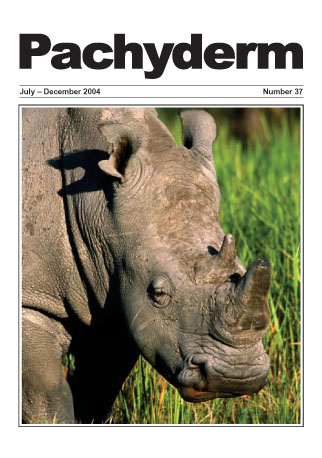Chemical composition of mineral licks used by elephants in Aberdares National Park, Kenya
Abstract
This July-August 2002 study assessed the physical and chemical properties of 14 natural mineral licks and their use by African elephants in Aberdare NP in Central Kenya and recorded the elephant use of 2 artificial salt licks, in the same Park, for 15 days. The mineral licks were postioned by GPS and classified according to extend of present use: light, moderate, heavy and abandoned. A total of 56 samples were taken from the mineral licks and 52 control samples were taken from locations about 200m away each of the licks. The mineral licks or 'eaten earths differed from the uneaten earths primarily in their significantly higher sodium and iodine concentrations'. The mineral lick samples contained a higher clay content than did the control samples. 'This work therefore isolated sodium iodine and clay content as the possible stimuli for geophagy among the elephants' in this area. The authors note: 'Sodium preference could be attributed to palatability, clay has a possible medicinal function and also retards leaching of sodium and iodine. It appears elephant seek inorganic sources to supplement iodine well as sodium and it would be important to assess licks for both elements in areas where range is becoming more restricted as the animals may not be able to access mineralized soils areas they used to. The age and sex of the animals using two artifical salt licks in the vicinity of tourist hotels were recorded over a 15 day period.
Downloads
Published
How to Cite
Issue
Section
License
Copyright (c) 2004 Peter Njiiri Mwangi, Antoni V. Milewski, Geoffrey M. Wahungu

This work is licensed under a Creative Commons Attribution-NonCommercial 4.0 International License.




